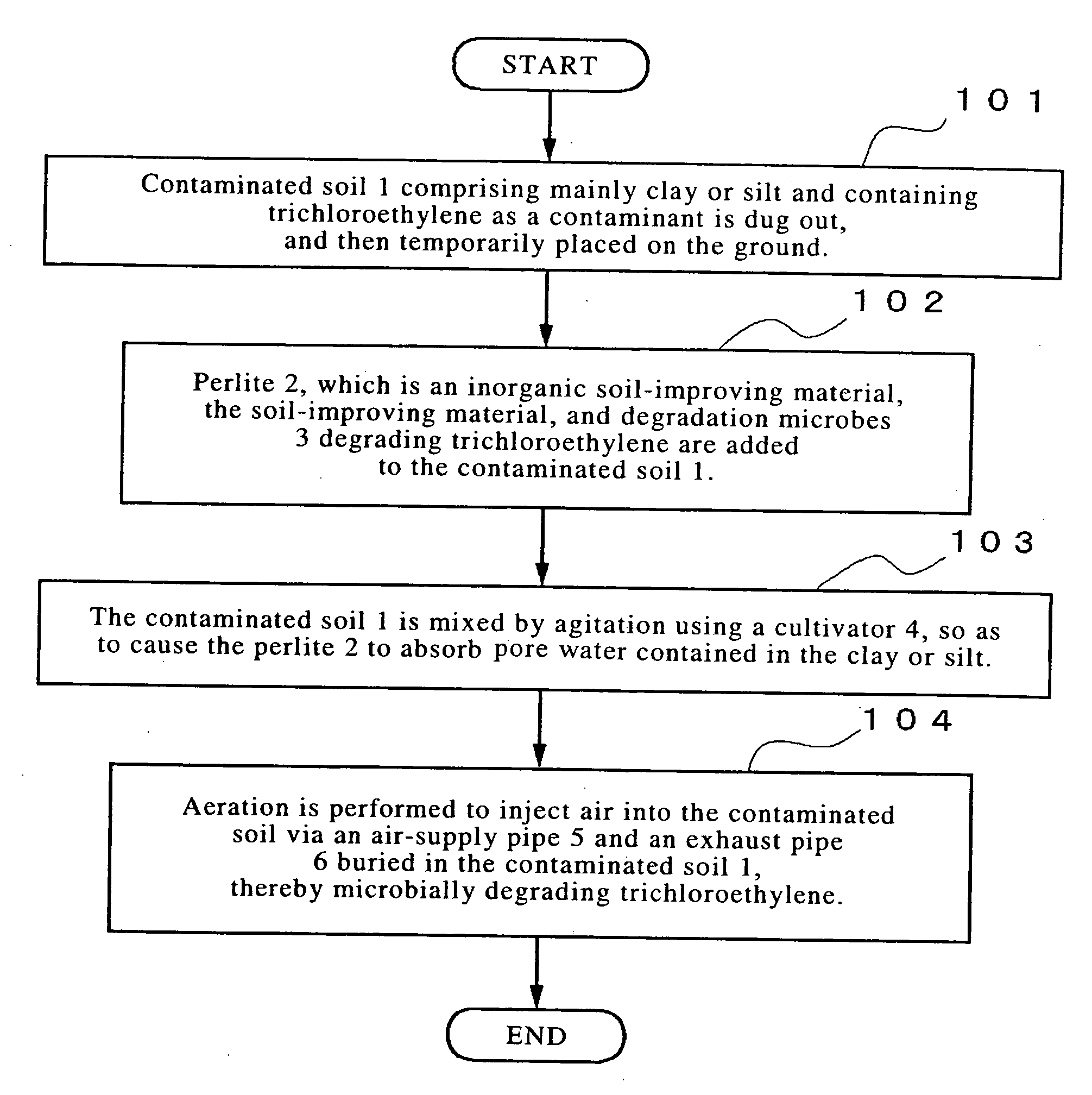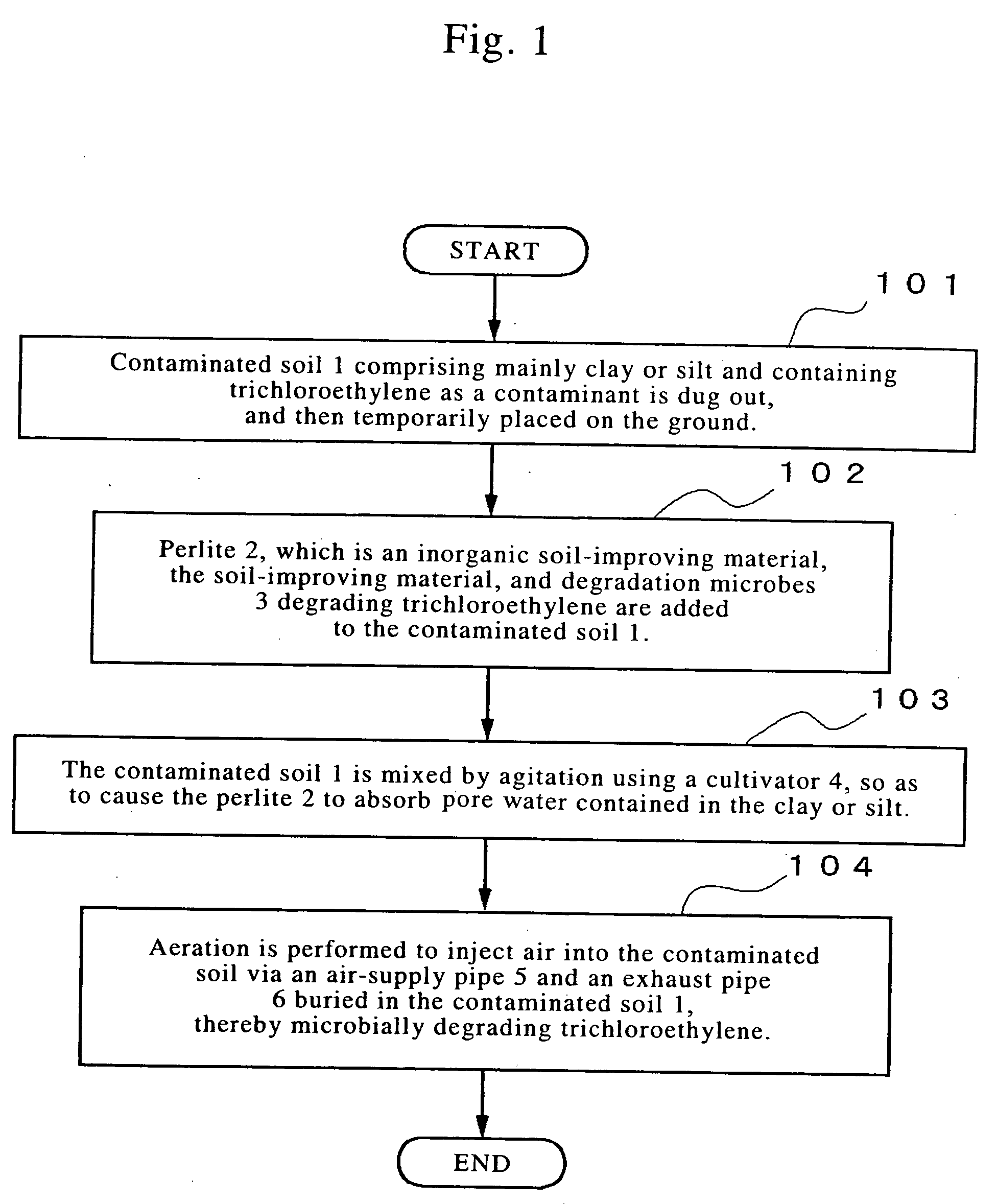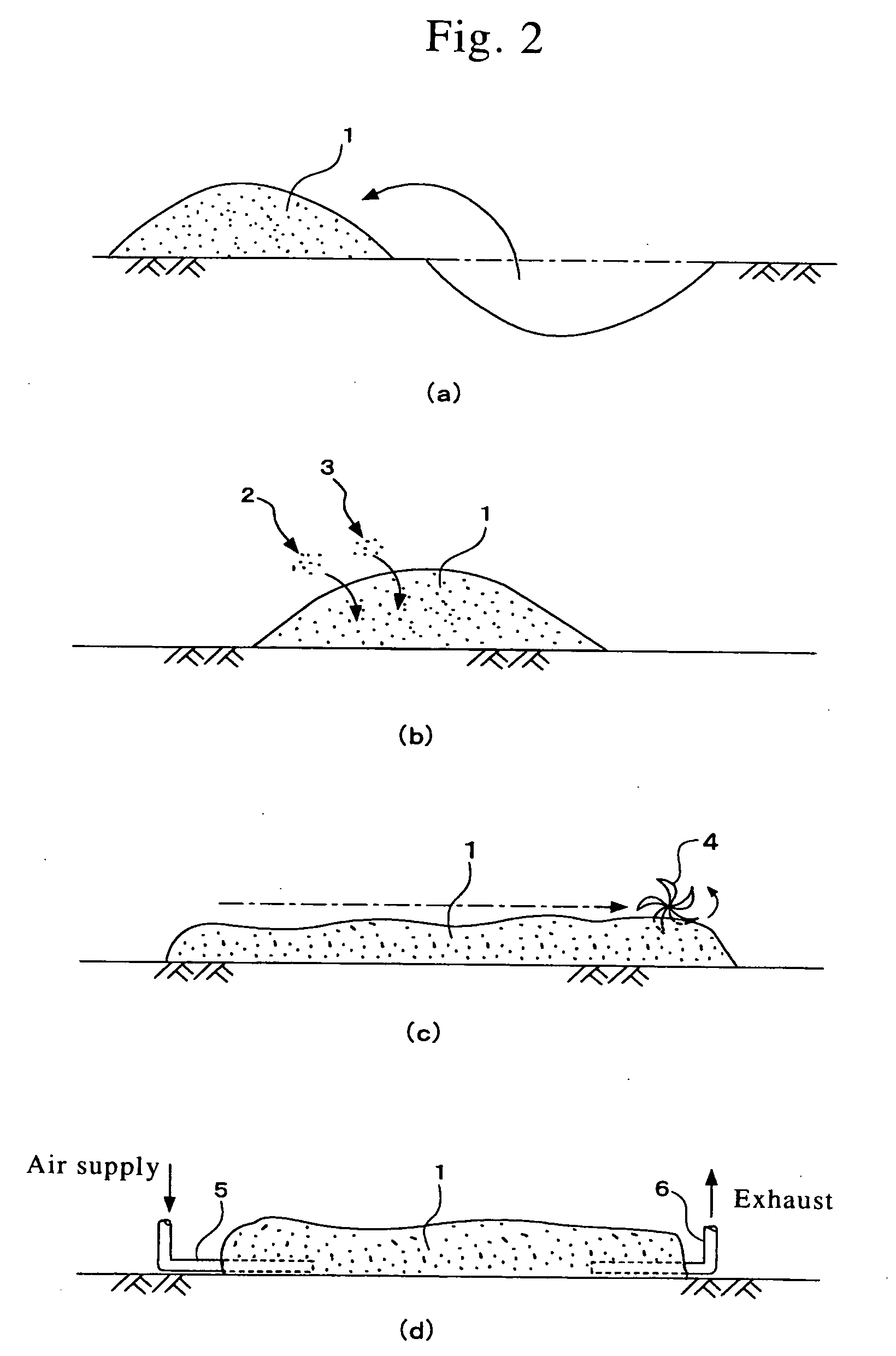Method of purifying contaminated soil using microorganism
- Summary
- Abstract
- Description
- Claims
- Application Information
AI Technical Summary
Benefits of technology
Problems solved by technology
Method used
Image
Examples
example
[0072] An experiment was conducted to demonstrate the operation and effect of the present invention. The outline of the experiment is as described below.
[0073] First, trichloroethylene was used as a contaminant, and then contaminated soil mainly comprising fine-grained soil with a water content ratio of 70% was prepared. Next, the strain MO7 as a trichloroethylene-degrading microbe and perlite as a soil-improving material were both added to the thus prepared contaminated soil, and then the soil was mixed by agitation using a Hobert mixer for 15 seconds.
[0074]FIG. 4 is a graph showing the results of examining decreases in the concentration of trichloroethylene, wherein the time elapsed after the completion of mixing by agitation (curing time) is plotted on the horizontal axis, and the trichloroethylene concentration is plotted on the longitudinal axis. In addition, in this experiment, aeration to inject air into contaminated soil is not performed.
[0075]FIG. 4 also shows the result...
PUM
 Login to View More
Login to View More Abstract
Description
Claims
Application Information
 Login to View More
Login to View More - R&D
- Intellectual Property
- Life Sciences
- Materials
- Tech Scout
- Unparalleled Data Quality
- Higher Quality Content
- 60% Fewer Hallucinations
Browse by: Latest US Patents, China's latest patents, Technical Efficacy Thesaurus, Application Domain, Technology Topic, Popular Technical Reports.
© 2025 PatSnap. All rights reserved.Legal|Privacy policy|Modern Slavery Act Transparency Statement|Sitemap|About US| Contact US: help@patsnap.com



